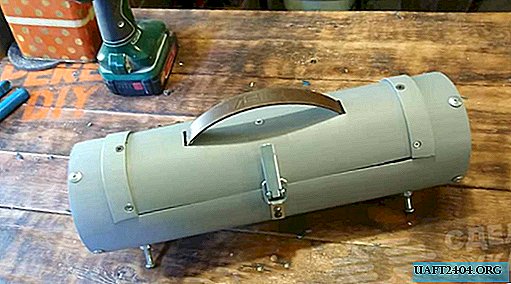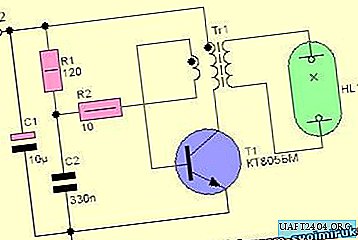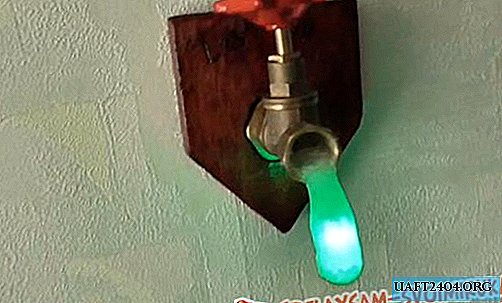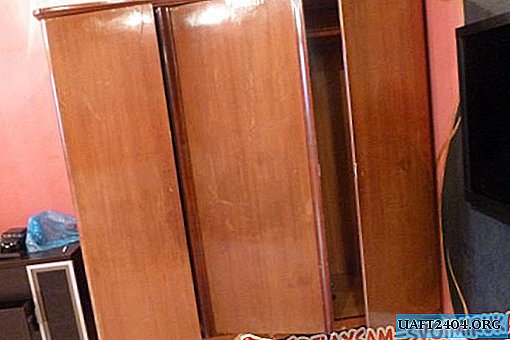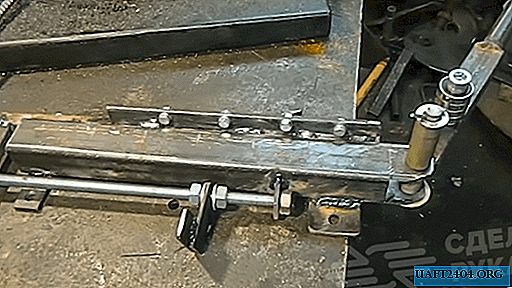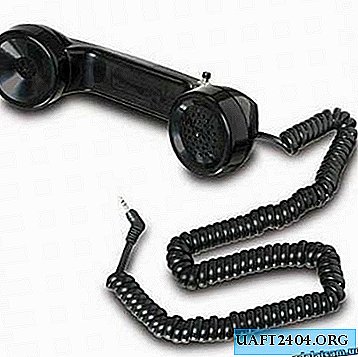Share
Pin
Tweet
Send
Share
Send

The materials and tools that I used
So, for the manufacture of the machine I needed the following materials:
- plank of multilayer plywood, about 10 mm thick;
- a wooden block with a rectangular section of 35x50 mm or 40x60 mm, about 1 meter long;
- driving furniture nut - 4 pieces (thread size as with studs);
- two threaded rods M6 - M10 plus three ordinary nuts for them and two bolts;
- screw clamp, its length should be enough to grab a hand electric drill with a margin;
- wood glue, screws.
Of the tools I used an electric drill, clamps, a crown or a mill with a diameter of about 10 mm, thin drills for drilling holes for screws. You will also need a small emery machine.

Making a lathe from a manual electric drill
We begin with the manufacture of a machine frame. To do this, I cut a plank of 60 cm long and 11 - 12 cm wide from multilayer plywood. I will immediately make a reservation regarding the sizes. Variations are possible here. But you should not make the frame too long, since the machine will be quite light, and it will not be easy to work on it with long parts.

An important point is the ratio of the width of the plywood frame and the size of the bar. It will be good if three bars fit on the width of the plywood board with the smaller side of the cross-section (why this is so, you will understand later). So, if a bar like mine is 35x50 mm, then the width of the frame should be about 11 cm or a little more. If you take a bar 40x60 mm, then the frame is 12 cm wide.

So, I sawed out the base of the frame with a width of 11 cm and a length of 60 cm. After that I saw off a bar along the length of the base, that is, also 60 cm. I cut the second bar along the length of the drill body so that it does not reach the chuck and subsequently does not prevented him from spinning.


With the help of carpentry glue, I connect the bars with smaller sides of the section so that their ends are on the same line. I clamp the parts to be glued together with clamps and let the glue harden. Our electric drive will be attached to this part of the frame, therefore, putting a drill to a short bar, I mark a place under the hole for the clamp. I will drill a hole into which an existing clamp can enter. In my case, the diameter is about 10 mm.


Next, I mark out a plywood board for placement in the middle of its width of a structure of two glued bars - long and short. Along the midline of the plank, I drill 7 to 8 holes for self-tapping screws evenly along the entire length.

Having fastened the glued bars with clamps to the plywood base, I deepen the holes by drilling the bar. Now I insert the screws and twist them. The frame of the machine is ready.

After that, we begin to manufacture the tailstock of the machine and the movable stop for the cutter. The headstock will hold the rotating part from the side opposite to the drive. It should move along the frame and be fixed in the desired position depending on the length of the clamped part. The cutter stop should also move freely along the workpiece. For their manufacture, I used trimmings of the same plywood and bar.



The movable base of the tailstock is a U-shaped design of two bars and a plywood rectangle. To the surface of the plywood base of the headstock using self-tapping screws we fasten the plywood square of double thickness, obtained by gluing two square pieces of plywood. In this square, a centering bolt will be fixed to clamp the workpiece. I planted a single plywood rectangle on self-tapping screws and glue to the bars. You should get a design that moves freely along the guide bar of the frame.




We pass to the electric drive side. We fix the electric drill with a screw clamp on the frame bar. To clamp the workpiece we need a threaded rod and nuts, plain and furniture hammered. Holding the pin in the drill chuck, mark the required length (4 - 5 cm) and cut it off.



We sharpen the end of the stud, using a combination of emery and a drill, holding a piece of the stud in the chuck. The end of the hairpin must be very sharp, as it will have to go into the wooden blank, centering it. Next, we refine the furniture nut by turning its pointed retainers 180 degrees with pliers. Using this part, the part will be clamped and torque transmitted to it from the electric drill.






We assemble the structure by screwing the nuts onto the stud. The sharp end of the stud should protrude a little further (1–2 mm) of the sharp latches of the furniture nut. So it will be more convenient to center the part. On the reverse side, the furniture nut is fixed normally. We clamp the free end of the stud into the drill chuck. If necessary, adjust the position of the drill, achieving parallelism of the stud and the frame bar.
Now you need to move the tailstock to the drive pin to determine the mounting location of the second centering bolt. We move the glued plywood square to the pointed hairpin, apply a light blow with a small hammer on its reverse side and get the desired mark from the sharp hairpin.




We drill a hole of such a size so that the sleeve of the second furniture nut enters into it. We do not modify it, but use it in the normal mode, inserting the sleeve into the hole and hammering the clamps with a hammer. If necessary, squeeze the nut in a vise. We sharpen the second hairpin, screw it into the furniture nut on the tailstock and fix it with ordinary nuts. By moving the headstock to the drive, we check and, if necessary, adjust the alignment of the studs.
Similarly to the tailstock we collect the base of the stop for the cutter. The difference lies in the fact that the plywood support shelf protrudes from one side. Here we fasten the block with screws, on which the cutter will rest.



Almost all. It remains to resolve the issue of fixing the tailstock and stop for the cutter. To do this, use the two remaining furniture nuts with bolts. Under them, drill holes in the side bars of the headstock and stop. We hammer furniture nuts there.



Now it’s all. By screwing bolts into these nuts, we can fix the headstock and stop in the desired position, pressing them to the guide bar. The guide bar can be treated with a wax composition for better sliding of the parts moving along it.
We center, clamp the workpiece, turn on the electric drill and start processing the part.






Conclusion
If the workpiece is not securely clamped, it can break and injure a worker or someone nearby. Clamping the parts must be done very carefully. Work should be done in overalls with the use of protective equipment - safety glasses, and preferably a transparent plastic shield that covers the entire face.
See detailed video on how to assemble a simple lathe
Share
Pin
Tweet
Send
Share
Send


